Catalog
Search
40 products
View:
- Selected: 0Areas of use
- Selected: 1Item names
- Selected: 0Manufacturer
- Selected: 0Made in
- Selected: 0Additional
View:
40 products
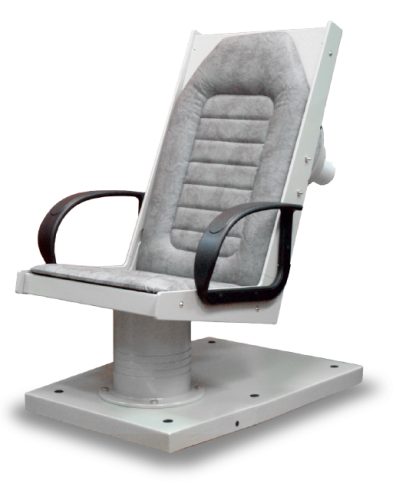
HUMAN RADIATION SPECTROMETER SKG‑AT1316A
Deliveries in the CIS are carried out by LLC NPP RADIKO
249035, Kaluga region, Obninsk, Marx Avenue, 14
Phone: 8(48439) 4-97-16, 4-97-18 / Fax: 8(48439) 4-97-68
E-mail: main@radico.ru / Web site: http://www.radico.ru
Control of exceeding the threshold value of the total activity of radionuclides 51Cr, 54Mn, 58Co, 59Fe, 65Zn, 95Nb, 100mAg, 103Ru, 124Sb, 141Ce, 144Ce in the lungs;
Flexible software control of the spectrometer functions, the formation of a database and a report on the results of the survey
Express control capacity - 15 people per hour
The possibility of sharing AT1316(AT1316A) and AT1322(AT1322/1)
The possibility of accommodation in a minibus as part of a mobile radiation control laboratory
Atomtekh
Minsk
Produced in: Belarus, Minsk
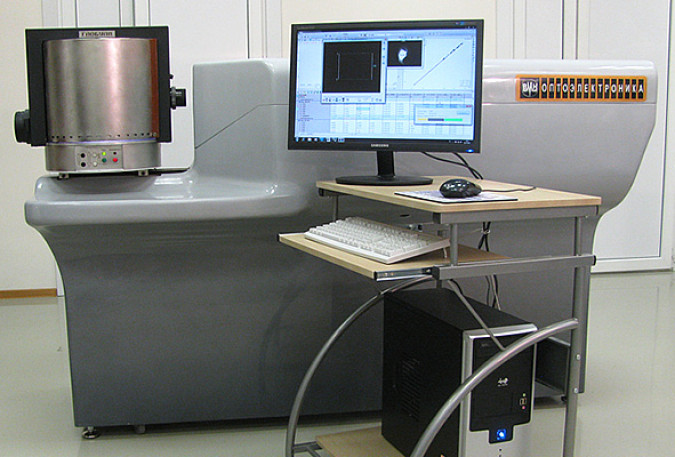
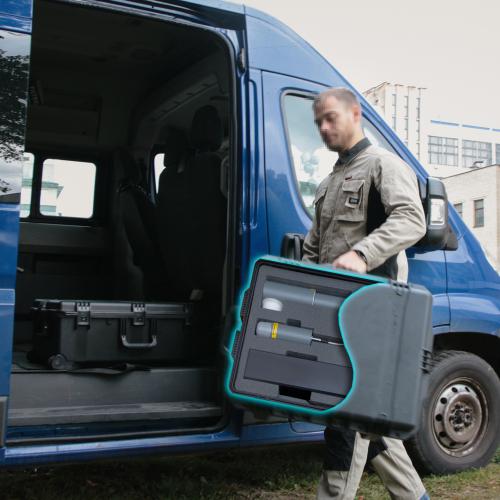
MOBILE RADIATION SCANNING COMPLEX ISS‑AT6103
Combination of the composition of detection units at the customer's request
Scalability of the complex in terms of sensitivity to gamma and neutron radiation in wide ranges
Automatic simultaneous gamma-neutron radiation scanning
Displaying measurement results with reference to the terrain (GPS) in real time
Search and detection of sources of radioactive radiation and identification of isotopic composition
Placement and use in impact-resistant cases
Assessment of the surface density of 137Cs radionuclide contamination (kBq/m2, Ci/km2)
Atomtekh
Minsk
Produced in: Belarus, Minsk

SPECTROMETER MCG‑AT1321
- Search and detection of gamma radiation sources with identification of radionuclide composition
- Measurement of the ambient dose equivalent of gamma radiation
The combination of compactness and high sensitivity
The possibility to analyze the spectrum and identify radionuclides without using a PC
A built-in GPS module
Audiable, light and vibration alarms
Atomtekh
Minsk
Produced in: Belarus, Minsk

Complex for atomic emission analysis of metals and alloys "Grand Expert"
VMK OPTOELEKTRONIKA
Novosibirsk
Produced in: Novosibirsk
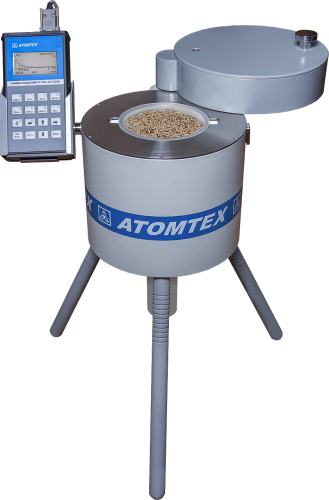
GAMMA‑RADIOMETERS RCG‑AT1320, RCG‑AT1320A, RCG‑AT1320V, RCG‑AT1320S
Intelligent spectrometric type detection unit
AT1320V: The possibility of radiation monitoring of mushrooms and berries in a 10-liter container box in 20 seconds
AT1320S: During the measurements, a preliminary analysis of the radionuclide composition of the sample is carried out. The activity is calculated based on the results of identification of radionuclides present in the controlled sample
Methodological support of measurements
Atomtekh
Minsk
Produced in: Belarus, Minsk
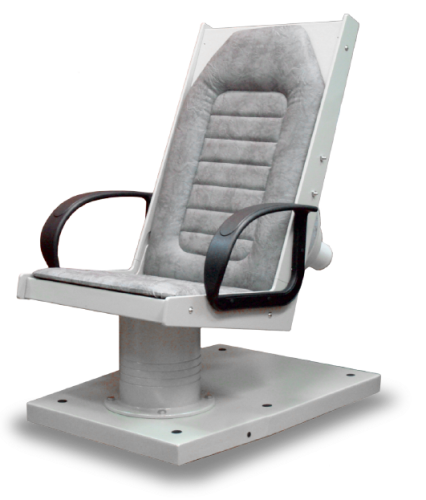
HUMAN RADIATION SPECTROMETER SKG‑AT1316
Calculation of the expected effective dose of internal radiation per year from incorporated 137Cs and 134Cs
Flexible software control of the spectrometer functions, the formation of a database and a report on the results of the survey
Express control capacity - 15 people per hour
The possibility of sharing AT1316(AT1316A) and AT1322(AT1322/1)
The possibility of accommodation in a minibus as part of a mobile radiation control laboratory
Atomtekh
Minsk
Produced in: Belarus, Minsk

MAX-GF1(2)E-C Spectrometer
The X-ray fluorescence spectrometer SPECTROSCAN MAX-GF1(2)E-C combines two methods of detecting an analytical signal: diffraction on a crystal (wave dispersion - WDX) and energy dispersion (EDX) method, as well as sample delivery adapted for the analysis of large-size images. The collimation of the primary radiation of the X-ray tube and the special design of the sample presentation make it possible to analyze the sample over an area of 1 cm2 in 1 mm increments, and thus investigate the distribution of elements over an area.
The spectrometer is designed to determine the contents of elements in the range from Ca to U in substances in solid, powdery, dissolved states, as well as deposited on the surface or deposited on filters. With the help of fixed energy dispersion channels, any one or two additional elements in the range from magnesium (Mg) to calcium (Ca) can be determined.
With the help of this modification of the spectrometer, forensic and customs examinations, judicial and forensic medical examinations, as well as art-historical examinations are carried out.
NPO Spektron
Saint Petersburg
Produced in: Saint Petersburg
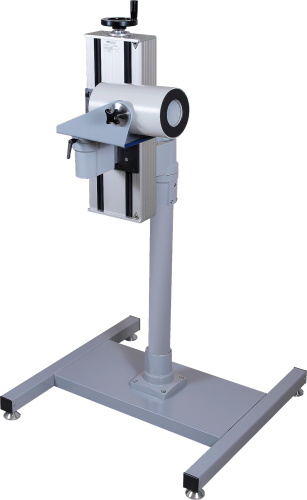
HUMAN RADIATION SPECTROMETERS SKG‑AT1322, SKG‑AT1322/1
Flexible software control of the spectrometer functions, the formation of a database and a report on the results of the survey
Express control capacity - 15 people per hour
The possibility of sharing AT1316(AT1316A) and AT1322(AT1322/1)
The possibility of accommodation in a minibus as part of a mobile radiation control laboratory
Atomtekh
Minsk
Produced in: Belarus, Minsk
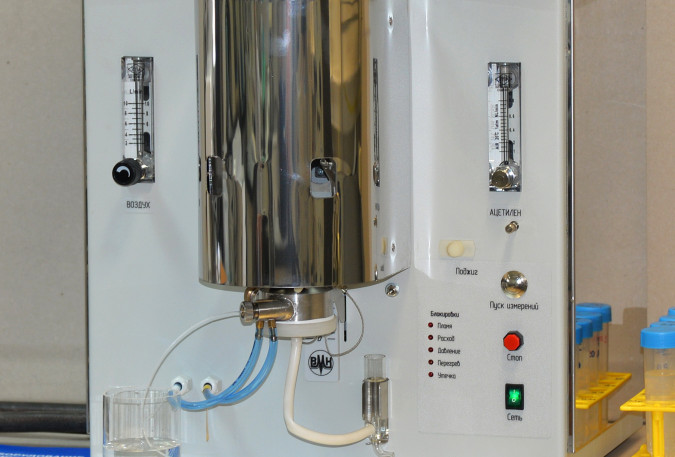
Flame spectrometer "Peacock"
The flame spectrometer is designed for rapid determination of a wide range of concentrations (up to 8 orders of magnitude) of sodium, lithium, potassium, calcium, barium, caesium, rubidium in technological solutions. The excitation of atoms occurs in an air-acetylene flame.
The device consists of a three-slit burner with flame control, a pneumatic sprayer, a spray chamber, an optical radiation input system into the "Hummingbird-2" spectrometer and an automatic air and acetylene supply system, with the possibility to control and adjust gas flow.
The use of a three-slit burner provides increased flame temperature over the central slit of the burner due to the external flame layers. This makes it possible to determine low concentrations of calcium and barium. At the same time, it remains the possibility to determine impurities in highly concentrated solutions without clogging the burner slots.
The lighting system of the spectrometer is mirror-lens, thanks to this, radiation collected from both sides of the burner is introduced into the polychromator.
VMK OPTOELEKTRONIKA
Novosibirsk
Produced in: Novosibirsk
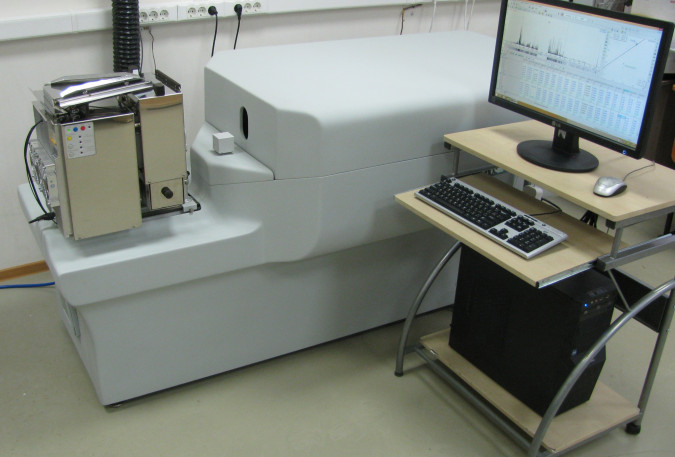
Atomic Emission Complex "Grand Stream"
Atomic Emission Complex "Grand Stream" is designed for rapid determination of the composition of powder samples of natural and industrial origin, includes a "Grand" spectrometer, a "Stream" installation and auxiliary equipment for sample preparation.
VMK OPTOELEKTRONIKA
Novosibirsk
Produced in: Novosibirsk
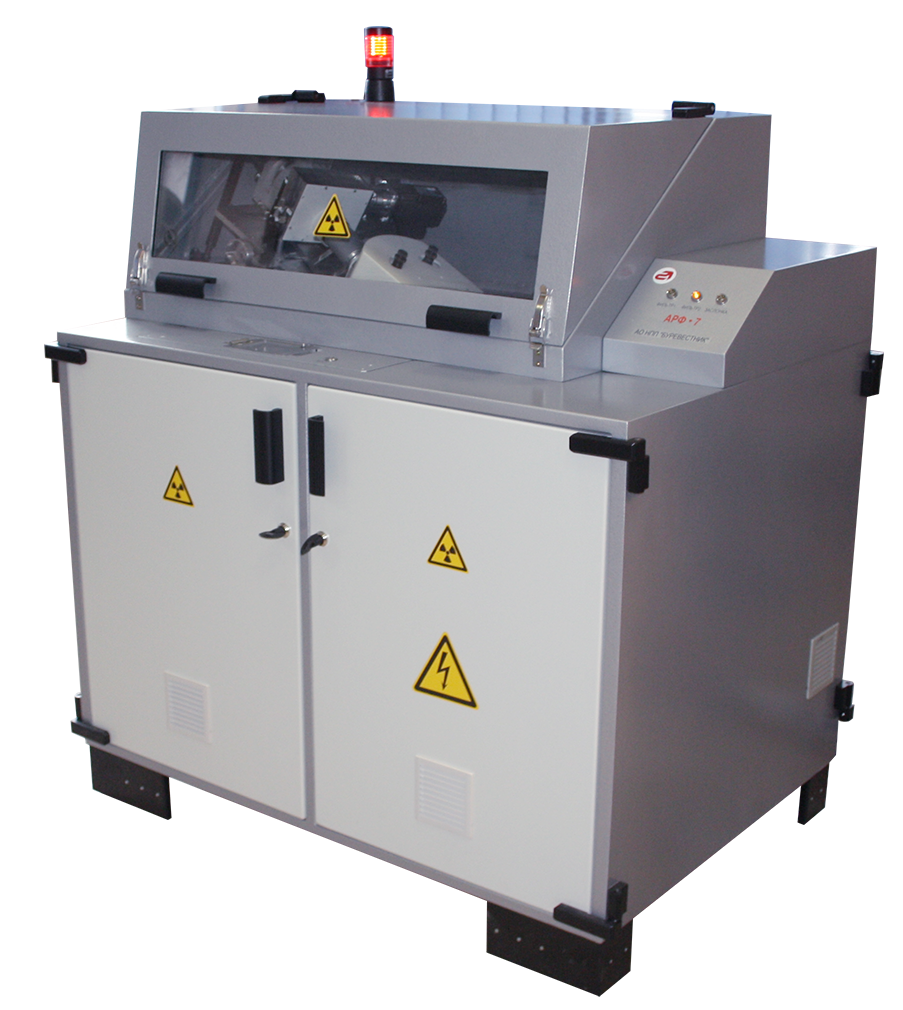
Specialized X-ray wavelength dispersive analyzer ARF-7
Specialized wavelength-dispersive XRF analyzer based on the Cochois scheme is designed for high-precision determination of chemical elements U, Th, Mo, Au, W, Tl, As, Pb as well as other elements in ores, rocks and when developing the technogenic fields.
Possibility to determine groups of elements without readjustment of crystal-analyzer.
Exceptionally high resolution of the Koshua X-ray optical scheme with crystal-analyzer quartz 1011.
Developed mathematical support.
Principle of analyzer operation is based on the excitation of the fluorescent radiation of sample atoms being under examination by radiation coming from an X-ray tube. Spectrum decomposition of the fluorescence radiation is performed according to Cauchois method. The fluorescence radiation focused by analyzing crystal and standard line are marked on Rowland focal circle. Then, they are recorded by X-ray radiation detector in turn. The intensity of the fluorescent irradiation with a particular wavelength is directly proportional to the chemical element concentration in the material under examination.
Burevestnik
Kolomyagi
Produced in: Saint Petersburg
